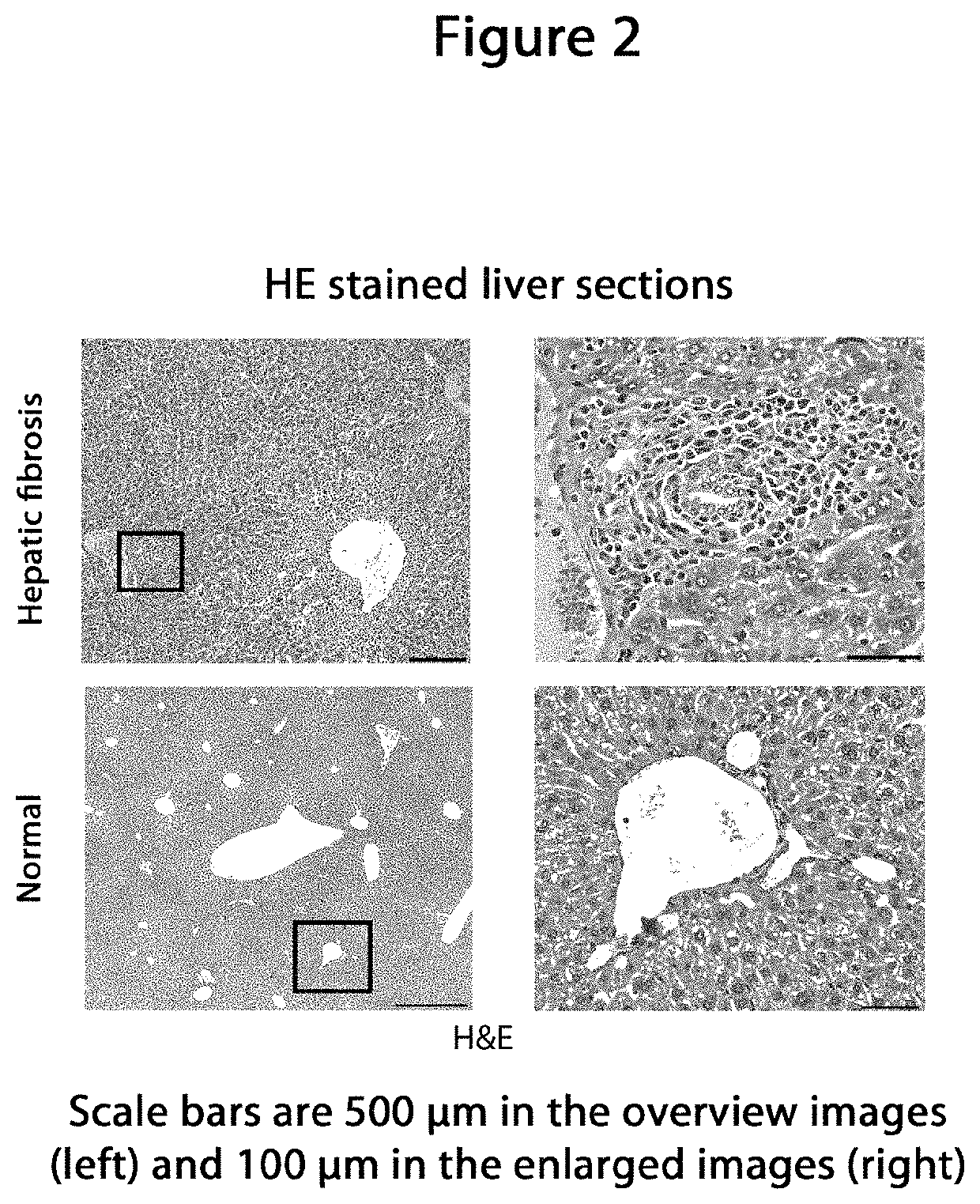Model animal for fibrosis
a model animal and fibrosis technology, applied in the field of nonhuman model animals of fibrosis, can solve the problems of insufficient accurate animal models of human fibrosis, inability to efficiently treat the fibrotic process, and inability to accurately reflect the condition in humans, so as to improve the fibrotic process, reduce inflammation, and improve the effect of fibrosis
- Summary
- Abstract
- Description
- Claims
- Application Information
AI Technical Summary
Benefits of technology
Problems solved by technology
Method used
Image
Examples
examples
[0098]Herein below, the present invention will be described more specifically with reference to the Examples, but it is not limited thereto.
[0099](a) Preparation of Fibrosis Model Mice
[0100]TCRαβ-transgenic mice were made directly on a NOD genetic background using TCR expression constructs encoding a CD1d-reactive TCR. Each TCR chain construct (containing rearranged TCR Vα3.2 and TCR Vβ9 regions, respectively) was microinjected alone to create single chain transgenic mice. Transgenic founders were screened by flow cytometry for transgene expression Mice positive for the transgenic TCRα and β chains were intercrossed to obtain TCRαβNOD mice expressing the complete transgenic TCR.
[0101]The fibrosis model mouse was generated by crossing the TCRαβNOD and the NOD.Rag2− / − mouse strains. Crossing the TCRαβNOD mouse with the B6.Rag2− / − mouse strains and then backcrossing to NOD for 10 generations generated the TCRαβB6.Rag2− / − fibrotic model mice.
[0102]For evaluation the mice were sacrificed...
PUM
| Property | Measurement | Unit |
|---|---|---|
| thick | aaaaa | aaaaa |
| morphology | aaaaa | aaaaa |
| weight | aaaaa | aaaaa |
Abstract
Description
Claims
Application Information
 Login to View More
Login to View More - R&D
- Intellectual Property
- Life Sciences
- Materials
- Tech Scout
- Unparalleled Data Quality
- Higher Quality Content
- 60% Fewer Hallucinations
Browse by: Latest US Patents, China's latest patents, Technical Efficacy Thesaurus, Application Domain, Technology Topic, Popular Technical Reports.
© 2025 PatSnap. All rights reserved.Legal|Privacy policy|Modern Slavery Act Transparency Statement|Sitemap|About US| Contact US: help@patsnap.com



